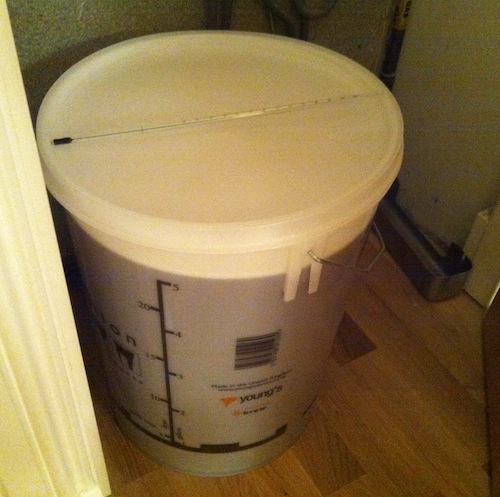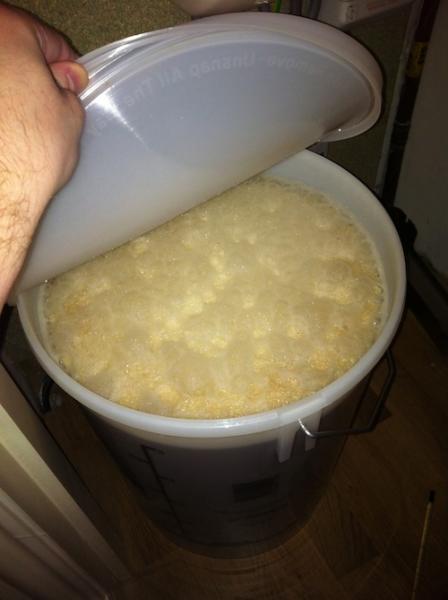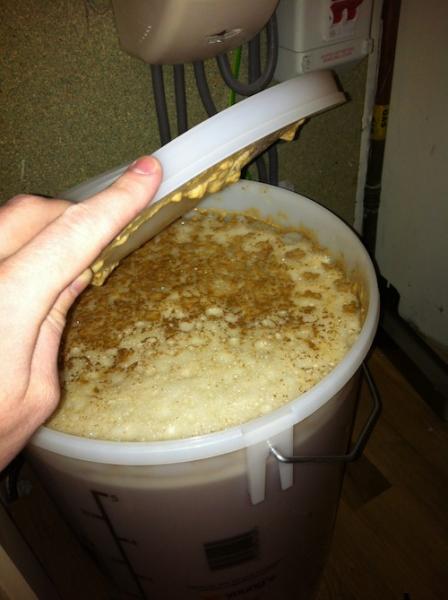Started my first ever brew, pretty excited! 
It's a lager in a 5 gallon container - a gift from a friend. I sterilised the container to the best of my knowledge (10 minutes and rubbing a cloth round the top and edges and lid), before rinsing it out about 4 times.
I was keen to get my first brew tasting as good as possible without complicating things (the malt extract etc was from a tin/kit), and the guy in the local home brew shop suggested I use spray malt instead of brewing sugar, as it would give it a richer colour/more body. I was just worried it would taste like Fosters/Tennents (i.e. piss!).
Followed the instructions quite clearly, and the temperature of the water was around 21'C when I added the yeast and spray malt.
Now, the container lid didn't have a hole in it, and the guy in the shop was rather surprised it didn't, and said there was usually a valve of some sort on the top to let gas/pressure out. He said to not seal the container all the way round, and leave a slight gap in one side.
So, after a couple days, it was looking good - frothing/bubbling up. The room I have it in has been 16-18'C constantly. The instructions said 4-6 days, though given that it has been slightly colder in the room than the ideal 18-21'C, I thought I'd maybe give it an extra day or two.
Day 3/4 the bubbles had what appeared to be dried froth on the top. Today is day 5 of fermentation and all the froth has gone along with most of the bubbles.
Does these photos look normal? I was planning to bottle it tomorrow (Wednesday).





It's a lager in a 5 gallon container - a gift from a friend. I sterilised the container to the best of my knowledge (10 minutes and rubbing a cloth round the top and edges and lid), before rinsing it out about 4 times.
I was keen to get my first brew tasting as good as possible without complicating things (the malt extract etc was from a tin/kit), and the guy in the local home brew shop suggested I use spray malt instead of brewing sugar, as it would give it a richer colour/more body. I was just worried it would taste like Fosters/Tennents (i.e. piss!).
Followed the instructions quite clearly, and the temperature of the water was around 21'C when I added the yeast and spray malt.
Now, the container lid didn't have a hole in it, and the guy in the shop was rather surprised it didn't, and said there was usually a valve of some sort on the top to let gas/pressure out. He said to not seal the container all the way round, and leave a slight gap in one side.
So, after a couple days, it was looking good - frothing/bubbling up. The room I have it in has been 16-18'C constantly. The instructions said 4-6 days, though given that it has been slightly colder in the room than the ideal 18-21'C, I thought I'd maybe give it an extra day or two.
Day 3/4 the bubbles had what appeared to be dried froth on the top. Today is day 5 of fermentation and all the froth has gone along with most of the bubbles.
Does these photos look normal? I was planning to bottle it tomorrow (Wednesday).







